June Plant of the Month: Geraniums
Learn all about this reliable summer border filler - and choose from a wide variety to suit any type of garden.
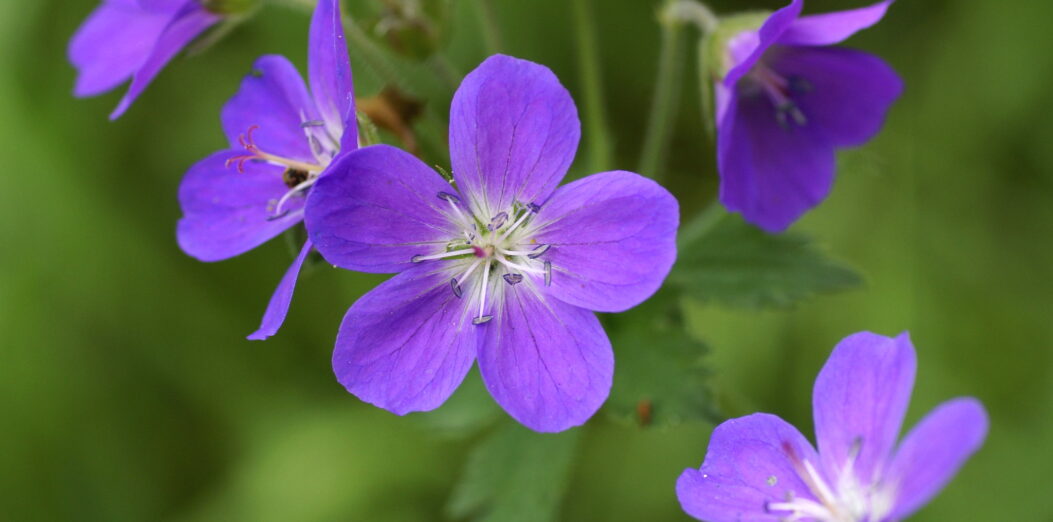
Hardy geraniums are an underrated star of the perennial border. Commonly known as cranesbill geraniums, they are reliable, long-flowering, undemanding plants and June is when many varieties are beginning to shine. Within the genus there are tiny alpine geraniums and substantial border geraniums, flowering in a wide variety of colours.
Appearance
- Hardy geraniums are low-growing plants with saucer-shaped flowers ranging in colour from purple, mauve and pink to white.
- Many varieties spread easily, making them excellent ground cover plants. They have quite distinctive leaf shapes which associate well with contrasting foliage.
- Many are semi-evergreen and some also develop additional colours in autumn. They vary greatly in both flower and plant size, so make sure the variety reaches a suitable size for your space.
Right: Geranium ‘Spessart’
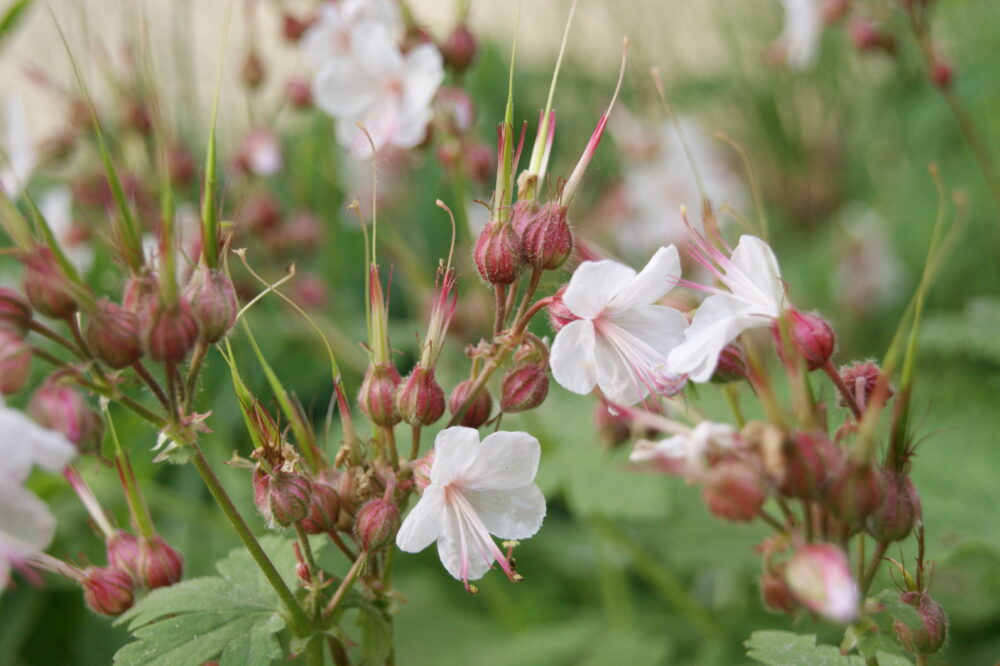
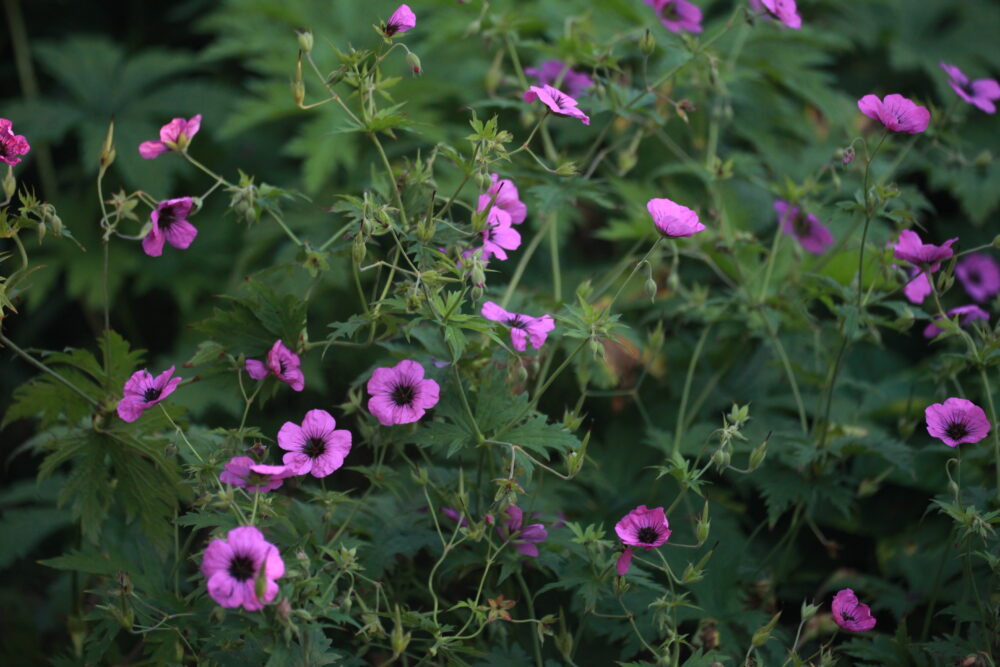
Where to Plant Them
- Most hardy geraniums thrive in light shade, whilst the smaller alpine types do best in full sun. Hardy geraniums can cope with any soil type and some, such as Geranium sylvaticum and its cultivars, can cope with very dry conditions.
- Grow hardy geraniums in moist but well-drained soil. These really are tough plants and many varieties will survive in the toughest of conditions. They’re a great choice for planting at the front of mixed borders or under trees and shrubs.
- They have a long flowering season so many plants will look great alongside them. With their low growing habit, they look great planted amongst grasses or taller perennials.
- At the front of a classic herbaceous border, paired with fresh green ferns, under a Japanese Acer or on mass as a ground cover they are a great way of filling gaps in any planting style.
Left: Geranium ‘Patricia’
Pests and Diseases
- Hardy geraniums are mostly trouble-free. However, they can be attacked by the larvae of geranium sawfly. These look like tiny grey caterpillars, around 12mm long. They munch holes in the leaves, leaving an unsightly, lace-like appearance.
- Although the damage can be very unsightly, it rarely weakens the vigour of the plant but if you want to keep them under control cultivating the ground beneath susceptible plants by clearing debris and lightly raking the soil will expose the larvae to be killed by frost, and to be eaten by birds and other predators.
- Check the undersides of leaves carefully from May onwards for signs of the eggs and larvae and remove by hand, if possible, to avoid numbers building up
Right: Geranium ‘Rozanne’
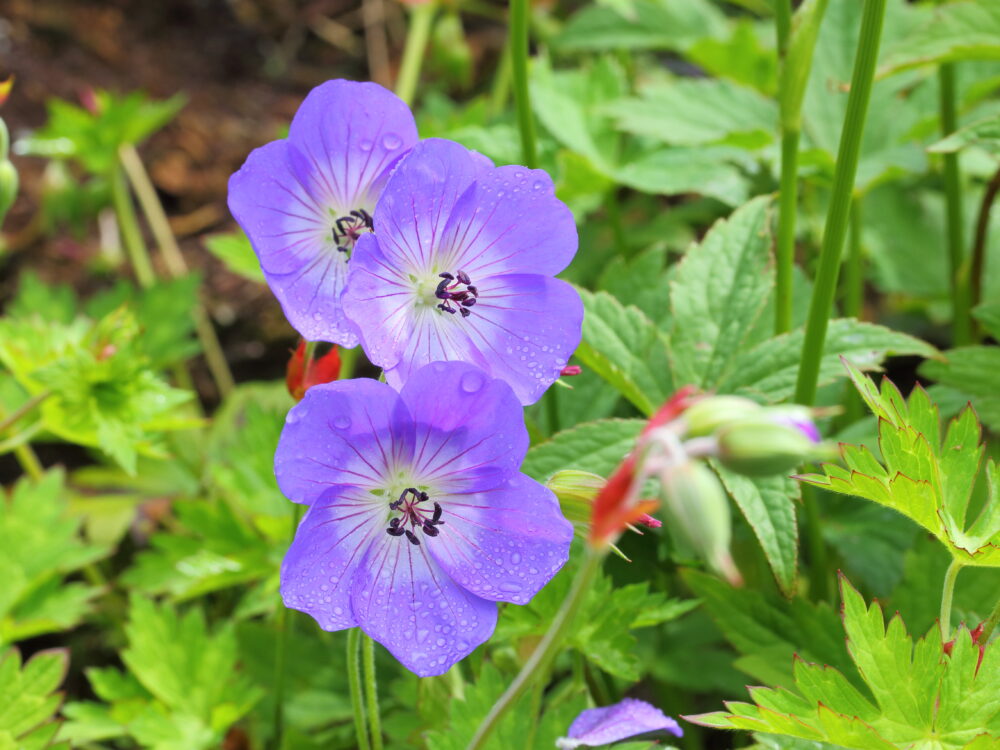
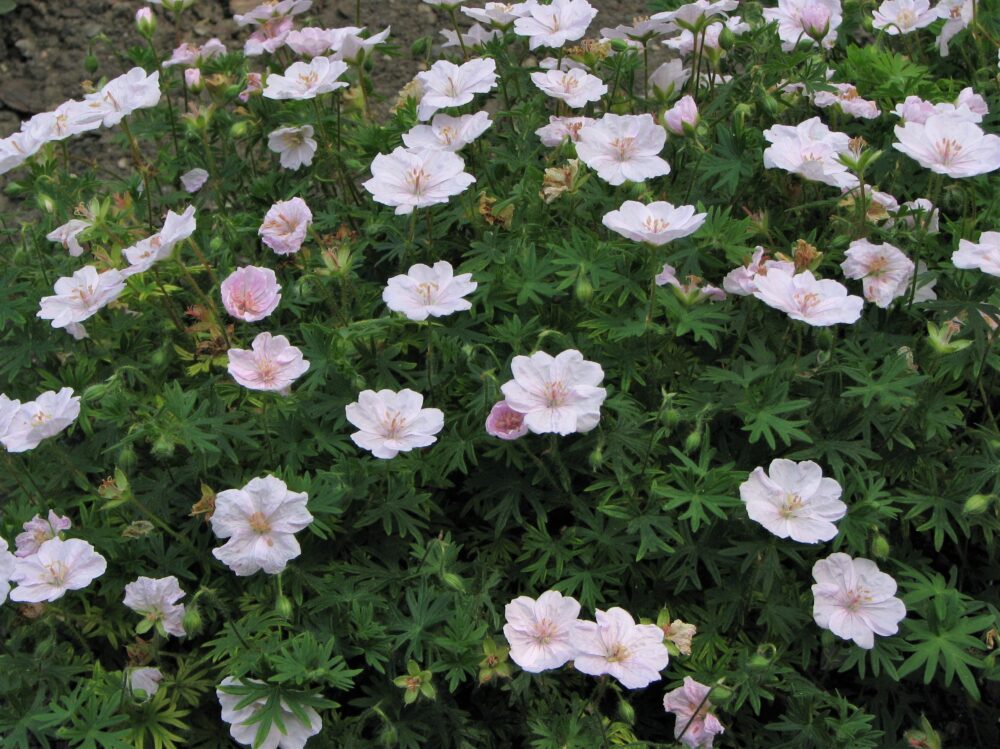
Plant Care
- Hardy geraniums need very little care. They’re not targeted by rabbits, and slugs and snails will eat other plants in preference.
- To encourage a longer flowering season and keep the foliage look fresh, they can be cut back right to the ground after their first flush of flowers.
- Some hardy geraniums offer attractive autumn foliage, so delay the final cut back too quickly after flowering.
- Many will easily self-seed so if you want to increase the number of plants you have or reduce the size of a clump, plants can be lifted and divided in spring.
Left: Geranium sanguineum var. striatum
Varieties to Consider
- There are many hardy geraniums to choose from for a wide variety of positions and styles.
- Geranium ‘Rozanne’: bears large violet-blue flowers with white centres and grey anthers, for months on end. This variety is easy to find at a garden centre. Plant in the middle of a bed. It looks great with roses and other traditional herbaceous perennials. Another popular geranium with a similar violet-blue flower, but a much large habit is Geranium ‘Orion’.
- Geranium ‘Spessart’: this true plant has dainty white flowers. It makes a useful ground cover plant for dry, shady areas, producing a dense mat of aromatic leaves, which take on good autumn colour.
- Geranium ‘Patricia’: Great if you are looking for a bold splash of colour. Bears bright purple flowers with black centres over a low-growing mound of dark green leaves. Leaves turn a fantastic shade of red in autumn. Looks great planted under lime green or dark purple leaved shrubs such as Spiraea ‘Goldflame’ or Pittoporum Tom ’Thumb’
- Geranium cinereum ‘Ballerina’: Low growing habit makes it a great rockery plant. Flowers are pale pink but very heavily patterned with purplish pink veins and with a deep red eye. The flowers keep coming during spring and summer with a scattering continuing into autumn and are set against neatly divided silver leaves.
- Geranium sanguineum var. striatum: Dainty, low growing, deeply divided leaves, typical of sanguineum, form a pleasing, spreading carpet of green, with beautiful pink flowers blooming en masse. A UK native plant growing wild on the dunes and sandy grasslands of Walney Island, Cumbria, it is a versatile Geranium, great at the front of a border, a rockery or if you are tight on space this looks great tumbling out of a pot.
Some of these varieties are shown in the photos above and right.
Right: Geranium cinereum ‘Ballerina’

From planning a new border to a complete garden remodel, we pride ourselves on transforming ideas into beautiful reality, with minimum disruption. If you’re based in or around the Reading and Newbury area, we’d love to meet and discuss your project in detail – book your free no-obligation garden consultation today.
Image Credits:
Geranium Spessart; Geranium Patricia; Geranium ‘Rozanne’; Geranium Sanguineum; Geranium cinereum ‘Ballerina’